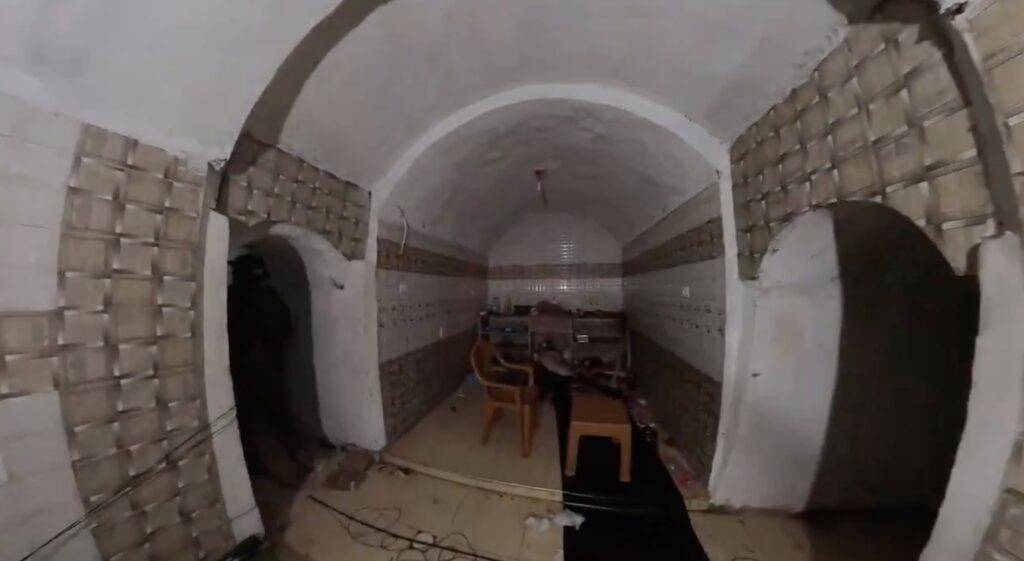Australia/Israel Review
Deconstruction Zone: The political purpose of Hamas’ tunnels
Mar 28, 2024 | John Spencer

The use of tunnels in wars is not new. Seeking advantage by using either natural or man-made spaces underground is as ancient as warfare itself – from stories of tunnels being used to win massive battles in the Bible to underground spaces becoming key factors in urban battles, like Mariupol and Bakhmut in the ongoing war in Ukraine.
Modern nations including the United States, China, and North Korea invest billions in deep-buried military bunkers and tunnel complexes. But what Israel has faced in Gaza represents a unique first in war – namely, a case in which tunnels form one of two pillars, along with time, of a combatant’s political-military strategy.
Before the Israel-Hamas war, both the presence of Hamas tunnel networks and their growth over the years were very well known. The Israel Defence Forces (IDF) and scholars estimated before the war that there were 480 km of tunnels ranging from 4.5 metres to over 61 metres below the surface. The estimates were wrong.
After three months of close combat, Israeli forces have unearthed massive invasion tunnels four kilometres long, underground manufacturing plants, luxury tunnels with painted walls, tile floors, ceiling fans, and air conditioning, and a complex, layered, labyrinth underneath all areas of Gaza. New estimates say the network may include between 563 to 725 km of tunnels, with close to 5,700 separate shafts.
The sheer size of Hamas’ underground networks may, once fully discovered, be beyond anything a modern military has ever faced.
But more importantly than the scale of the tunnels in Gaza, the Israel-Hamas war is the first war in which a combatant has made its vast underground network a defining centrepiece of its overall political-military strategy.
In the past, military tunnels and bunkers have been built specifically to gain a military advantage. Underground spaces enable militaries to conserve capabilities by avoiding detection and strike, to hold terrain by using the tunnels for mobile defence tactics, or even offensively to use guerrilla tactics to attrit the attacking force.
For the first time in the history of tunnel warfare, however, Hamas has built a tunnel network to gain not just a military advantage, but a political advantage, as well.
Hamas weaved its vast tunnel networks into the society on the surface. Destroying the tunnels is virtually impossible without adversely impacting the population living in Gaza. Consequently, they put the modern laws of war at the centre of the conflict’s conduct. These laws restrict the use of military force and methods or tactics that a military can use against protected populations and sites such as hospitals, churches, schools, and United Nations facilities.
Almost all of Hamas’ tunnels are built into civilian and protected sites in densely populated urban areas. This complicates discriminating between military targets and civilian locations – if not rendering it entirely impossible- because Hamas does not have military sites separate from civilian sites.
Hamas’ strategy is not to hold terrain or defeat an attacking force. Its strategy is about time – time for international pressure to mount on Israel to stop its military operation.
The group wants as many civilians as possible to be harmed by Israeli military action – as one of its officials put it, “We are proud to sacrifice martyrs.” It wants the world’s attention on the question of whether the IDF campaign is violating the laws of war in attacking Hamas tunnels that are tightly connected to civilian and protected sites. It wants to buy as much time as is needed to cause the international community to stop Israel.
To deal with tunnels at the tactical level, Israel has demonstrated some of the world’s most advanced units, methods, and capabilities to find, exploit, and destroy tunnels. From specialised engineer capabilities and canine units to the use of robots, flooding to clear tunnels, and both aerial-delivered and ground-emplaced explosives, to include liquid explosives, to destroy them.
But the strategic challenge is entirely different. To destroy many of the deep-buried tunnels, the IDF has required bunker-busting bombs, which Israel is criticised for using. And most importantly it has required time to find and destroy the tunnels in a conflict in which Hamas’ strategy is aimed at limiting the time available to Israel.
Hamas’ strategy, then, is founded on tunnels and time. Hamas is in the tunnels. Its leaders and weapons are in the tunnels. The Israeli hostages are in the tunnels. And Hamas’ strategy is founded on its conviction that, for Israel, the critical resource of time will run out in the tunnels.






